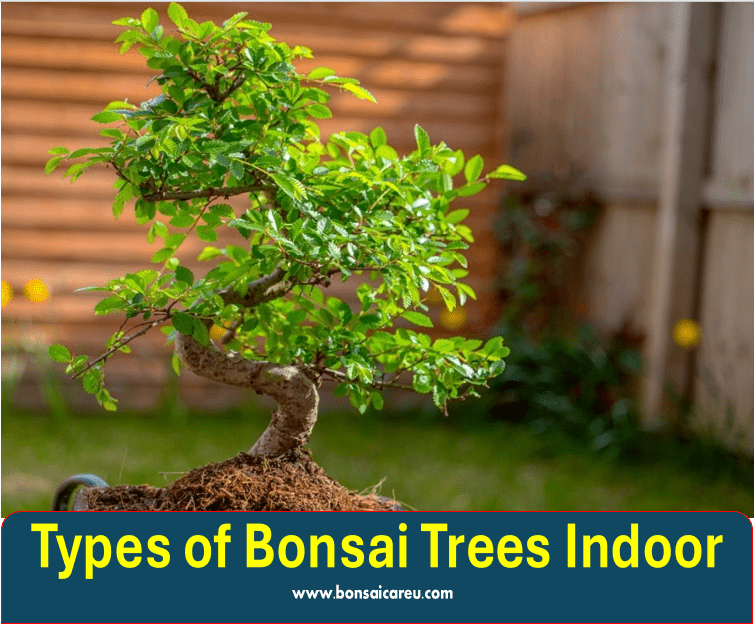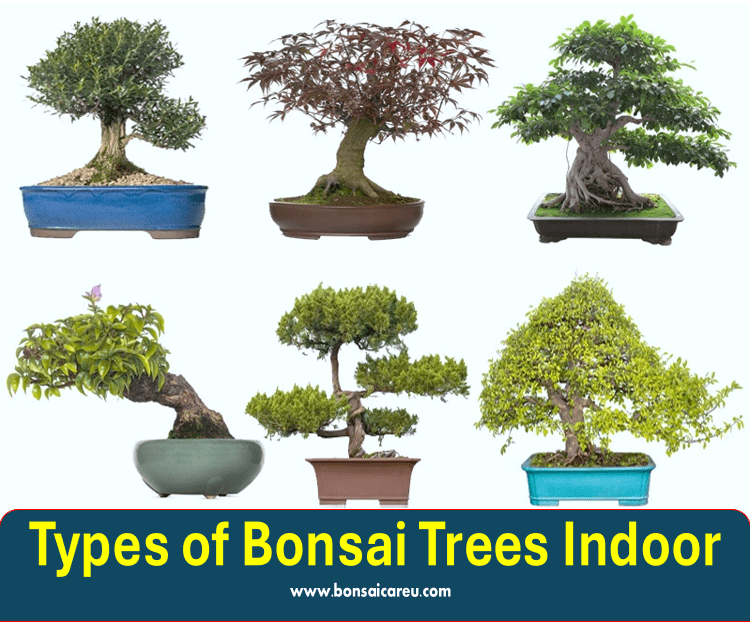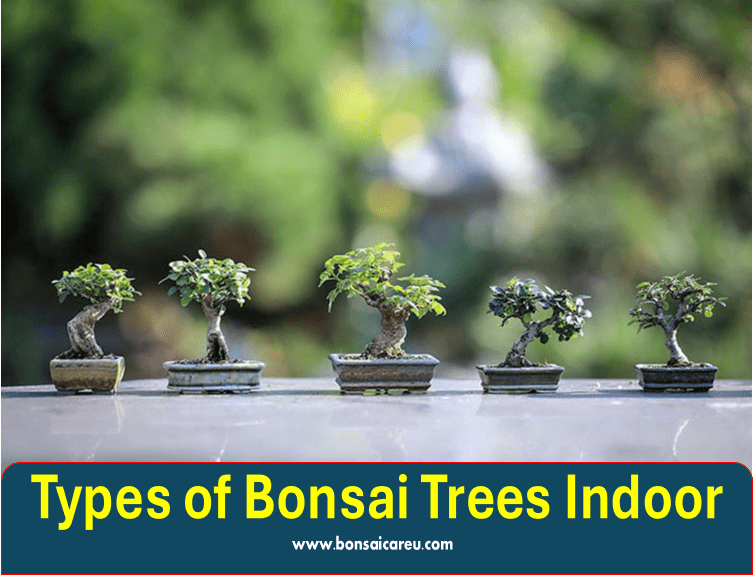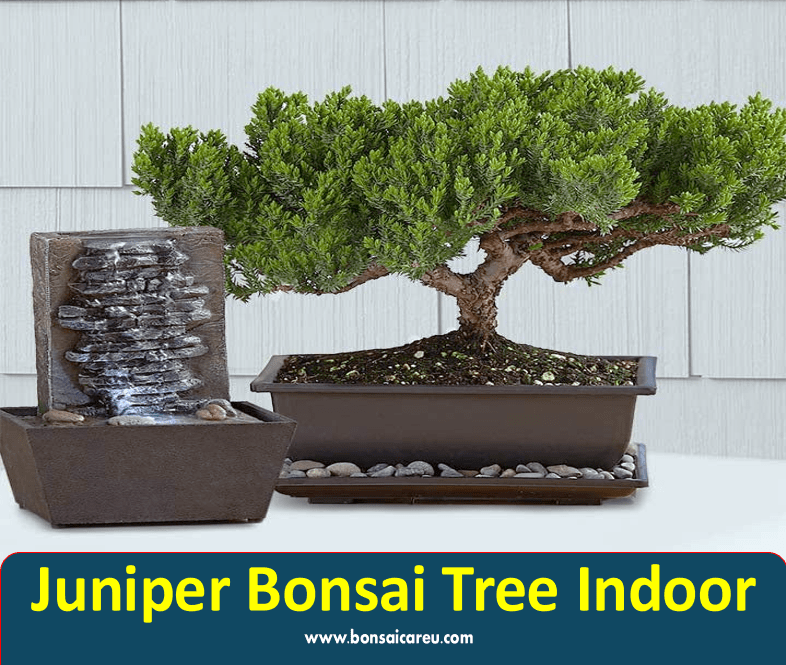Types of Bonsai Trees Indoor: Several types of indoor bonsai trees are available, including Ficus, Jade, and Chinese Elm. Bonsai trees are miniature trees that require proper care and pruning to maintain their size and shape.
These trees are popular among gardening enthusiasts and can add a touch of nature and beauty to any indoor space. Whether you are a beginner or an experienced bonsai gardener, there are indoor bonsai tree varieties to suit your taste and preference.
We will explore some types of bonsai trees that can thrive indoors and how to care for them.
Best Environment For Indoor Bonsai
Creating the best environment for indoor bonsai is crucial to their health and longevity. By understanding the specific needs of your bonsai, you can ensure that it thrives in your home. The key factors in providing the best environment for indoor bonsai include lighting needs, humidity, and temperature requirements.
Lighting Needs
Bonsai trees require adequate sunlight to thrive. Place your indoor bonsai where it can receive partial to full sunlight for at least 4-6 hours daily. South-facing windows are ideal for this. If natural light is limited, consider using grow lights to supplement the light requirements of your bonsai.
Humidity And Temperature Requirements
Indoor bonsai trees thrive in moderate to high humidity levels. Maintaining a humidity level of around 50-60% is essential for optimal growth. You can use a humidifier or place a pebble tray filled with water below the bonsai to achieve this. Additionally, indoor bonsai trees prefer a temperature range of 60-75°F. Avoid placing your bonsai near drafts or heating vents that can expose it to extreme temperature fluctuations.

Most Popular Types Of Indoor Bonsai Trees
Explore the most popular types of indoor bonsai trees, ranging from the elegant Ficus Benjamin to the timeless Juniper bonsai. Discover the beauty and tranquility these miniature trees can bring to your indoor space.
Ficus Bonsai
Ficus bonsai is one of the most popular types of indoor bonsai trees. These miniature trees are known for their vibrant green foliage and ease of care. Ficus bonsai is suitable for beginners and experienced enthusiasts, making them a favorite among bonsai enthusiasts. This type of bonsai tree is native to tropical and subtropical regions, which means it thrives in warm and humid environments.
Juniper Bonsai
Juniper bonsai trees are another popular choice for indoor bonsai enthusiasts. Their exquisite foliage and unique shapes captivate admirers’ eyes. Juniper bonsai is a hardy and versatile tree that can withstand indoor and outdoor environments. It is known for its resilience and ability to adapt to various climates. With proper care and attention to its watering and lighting needs, a juniper bonsai can live for many years and continue to bring beauty to any space.
Chinese Elm Bonsai
Chinese Elm bonsai trees are highly favored for their delicate yet intricate aesthetics. These trees exhibit small, glossy green leaves and textured bark, providing a visually pleasing experience. Chinese Elm bonsai trees are visually appealing and easy to care for, making them suitable for beginners. They can thrive indoors and outdoors, enabling enthusiasts to transition from one environment to another. This type of bonsai tree is also appreciated for its ability to tolerate various lighting conditions.
Jade Bonsai
Jade bonsai, or Crassula ovata, is an elegant choice for indoor bonsai enthusiasts. With its thick, succulent leaves and twisting branches, jade bonsai creates an intriguing and captivating display. This type of bonsai tree is highly durable and can withstand extended periods without water, making it perfect for those with a busy schedule. The jade bonsai symbolizes good luck and prosperity, making it a popular choice for both bonsai collectors and practitioners of feng shui.
The most popular indoor bonsai trees include the Ficus bonsai, Juniper bonsai, Chinese Elm bonsai, and Jade bonsai. Each of these types has unique characteristics and care requirements, but all offer stunning beauty and an opportunity to connect with nature on a miniature scale. Whether you are a beginner or an experienced bonsai enthusiast, these bonsai trees are excellent choices that bring joy and tranquility to your indoor space.
Choosing The Right Indoor Bonsai Tree
Discover the ideal indoor bonsai tree by exploring various types that thrive in indoor environments. From Ficus and Jade to Juniper and Chinese Elm, each brings nature’s beauty to your home decor. Consider light and care requirements to select the perfect bonsai for your space.
Consideration Of Space And Maintenance
Understand the space available and the maintenance the tree needs.
Personal Preferences And Aesthetics
Choose based on personal preferences and the desired aesthetics in the space.

Care And Maintenance
When caring for indoor bonsai trees, it’s essential to understand the specific needs of these delicate plants. Proper care and maintenance are crucial to ensure your bonsai’s health and long-term survival. From watering and pruning to repotting and soil requirements, each aspect of care is vital in nurturing these miniature masterpieces to thrive in an indoor environment.
Watering And Pruning Tips
Watering and pruning are two fundamental tasks in maintaining the health and aesthetics of your indoor bonsai trees. Overwatering can lead to root rot, while underwatering can cause dehydration and wilting. The key is to strike a balance, ensuring the soil remains moist but not soggy. Watering frequency may vary depending on the species, climate, and season, so it’s crucial to monitor the soil’s moisture level regularly.
- Use a watering can with a fine rose to distribute water evenly.
- Prune branches and foliage to maintain the desired shape and promote growth.
- Remove dead or yellowing leaves to prevent diseases and pests.
Repotting And Soil Requirements
Repotting is essential for maintaining the health and vitality of your indoor bonsai trees. It allows for root pruning, replenishing nutrients, and preventing the soil from compacting. The frequency of repotting depends on the tree’s age and growth rate.
Choosing the right soil is equally crucial as it directly impacts the bonsai’s growth and overall health. Well-draining, porous soil with balanced organic and inorganic components is ideal for indoor bonsai. It facilitates air circulation around the roots and prevents waterlogging.
- Repot young bonsai every 1-2 years for optimal growth.
- Use a well-draining soil mix to avoid waterlogged roots.
- Avoid disturbing the root system excessively during repotting.
Potential Challenges
While growing bonsai trees indoors can be a rewarding experience, enthusiasts need to be aware of some potential challenges in order to maintain the health and beauty of these miniature masterpieces. Understanding how to address pests, diseases, and common issues is essential for successful indoor bonsai cultivation.
Pests And Diseases
One of the main challenges when growing bonsai trees indoors is dealing with pests and diseases. These tiny trees are vulnerable to insect attacks and susceptible to various fungal and bacterial infections.
- Inspect the bonsai regularly for any signs of pests or diseases.
- Consider using natural remedies like neem oil or insecticidal soap for pest control.
- Prevent disease by maintaining good air circulation and proper watering techniques.
Troubleshooting Common Issues
Despite best efforts, bonsai trees may encounter common issues that require troubleshooting to ensure their vitality and aesthetic appeal.
- Yellowing or browning leaves could indicate overwatering or underwatering.
- If the bonsai soil is consistently wet, root rot may develop, leading to yellowing leaves and a weakened tree structure.
- Wilting or drooping foliage can result from inadequate light or incorrect watering practices.
- Yellow or black spots on leaves may be a sign of pest infestation.

Frequently Asked Questions About Types Of Bonsai Trees Indoor
What Is The Best Indoor Bonsai Tree?
The best indoor bonsai tree is the Ficus, known for its adaptability and ease of care.
Which Is The Best Bonsai Tree For Beginners?
The best bonsai tree for beginners is the Ficus Retusa because of its durability and ease of care. It is known for its thick trunk and glossy leaves, making it a popular choice among beginners. Regular watering and occasional pruning are all it needs to thrive.
How Do I Know If My Bonsai Is Indoor Or Outdoor?
Consider its species and natural habitat to determine if your bonsai is indoor or outdoor. Research the tree’s specific needs and growing conditions. If unsure, consult with a local nursery or bonsai expert for guidance.
How Do You Keep An Indoor Bonsai Tree Alive?
Place an indoor bonsai tree in a well-lit area away from drafts to keep it alive. Water it regularly, ensuring the soil is moist but not soggy. Use a humidity tray or mist the leaves to provide moisture. Prune and fertilize as needed and repot every few years to keep it healthy and thriving.
What Are The Best Bonsai Trees For Indoor Spaces?
Bonsai trees like Ficus, Jade, and Chinese Elm thrive indoors with proper care.
How Often Should I Water My Indoor Bonsai Tree?
Water your indoor bonsai tree when the topsoil feels dry to the touch, usually every 2-3 days.
What Is The Ideal Lighting Conditions For Indoor Bonsai Trees?
Indoor bonsai trees prefer bright, indirect light or filtered sunlight to thrive and grow well.
Conclusion
With many options available, choosing the right type of bonsai tree for indoor cultivation can be an exciting journey. From the elegant Ficus to the graceful Juniper, there is a bonsai tree to suit every preference and skill level.
Consider lighting, temperature, and maintenance requirements when selecting your indoor bonsai tree. With proper care and attention, these miniature trees can bring beauty and tranquility to any living space. So go ahead, embrace the art of indoor bonsai cultivation, and enjoy the benefits it brings.
Happy gardening!


